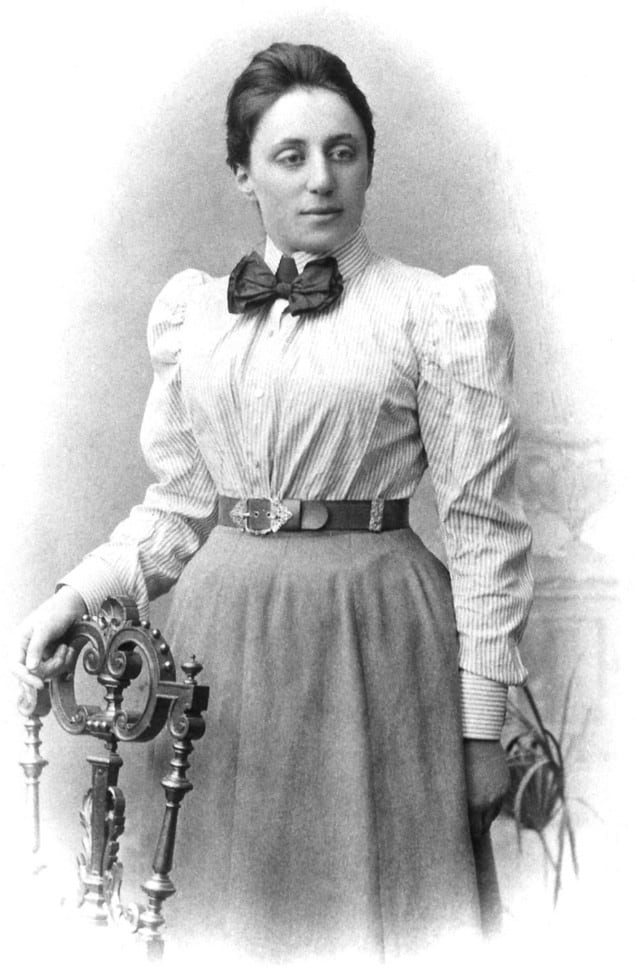Isabel Rabey reviews Einstein’s Tutor: the Story of Emmy Noether and the Invention of Modern Physics by Lee Philips

In his debut book, Einstein’s Tutor: the Story of Emmy Noether and the Invention of Modern Physics, Lee Phillips champions the life and work of German mathematician Emmy Noether (1882–1935). Despite living a life filled with obstacles, injustices and discrimination as a Jewish mathematician, Noether revolutionized the field and discovered “the single most profound result in all of physics”. Phillips’ book weaves the story of her extraordinary life around the central subject of “Noether’s theorem”, which itself sits at the heart of a fascinating era in the development of modern theoretical physics.
Noether grew up at a time when women had few rights. Unable to officially register as a student, she was instead able to audit courses at the University of Erlangen in Bavaria, with the support of her father who was a mathematics professor there. At the time, young Noether was one of only two female auditors in the university of 986 students. Just two years previously, the university faculty had declared that mixed-sex education would “overthrow academic order”. Despite going against this formidable status quo, she was able to graduate in 1903.
Noether continued her pursuit of advanced mathematics, travelling to the “[world’s] centre of mathematics” – the University of Göttingen. Here, she was able to sit in the lectures of some of the brightest mathematical minds of the time – Karl Schwarzschild, Hermann Minkowski, Otto Blumenthal, Felix Klein and David Hilbert. While there, the law finally changed: women were, at last, allowed to enrol as students at university. In 1904 Noether returned to the University of Erlangen to complete her postgraduate dissertation under the supervision of Paul Gordan. At the time, she was the only woman to matriculate alongside 46 men.
Despite being more than qualified, Noether was unable to secure a university position after graduating from her PhD in 1907. Instead, she worked unpaid for almost a decade – teaching her father’s courses and supervising his PhD students. As of 1915, Noether was the only woman in the whole of Europe with a PhD in mathematics. She had worked hard to be recognized as an expert on symmetry and invariant theory, and eventually accepted an invitation from Klein and Hilbert to work alongside them in Göttingen. Here, the three of them would meet Albert Einstein to discuss his latest project – a general theory of relativity.
Infiltrating the boys’ club
In Einstein’s Tutor, Phillips paints an especially vivid picture of Noether’s life at Göttingen, among colleagues including Klein, Hilbert and Einstein, who loom large and bring a richness to the story. Indeed, much of the first three chapters are dedicated to these men, setting the scene for Noether’s arrival in Göttingen. Phillips makes it easy to imagine these exceptionally talented and somewhat eccentric individuals working at the forefront of mathematics and theoretical physics together. And it was here, when supporting Einstein with the development of general relativity (GR), that Noether discovered a profound result: for every symmetry in the universe, there is a corresponding conservation law.
Throughout the book, Phillips makes the case that, without Noether, Einstein would never have been able to get to the heart of GR. Einstein himself “expressed wonderment at what happened to his equations in her hands, how he never imagined that things could be expressed with such elegance and generality”. Phillips argues that Einstein should not be credited as the sole architect of GR. Indeed, the contributions of Grossman, Klein, Besso, Hilbert, and crucially, Noether, remain largely unacknowledged – a wrong that Phillips is trying to right with this book.
Phillips makes the case that, without Noether, Einstein would never have been able to get to the heart of general relativity
A key theme running through Einstein’s Tutor is the importance of the support and allyship that Noether received from her male contemporaries. While at Göttingen, there was a battle to allow Noether to receive her habilitation (eligibility for tenure). Many argued in her favour but considered her an exception, and believed that in general, women were not suited as university professors. Hilbert, in contrast, saw her sex as irrelevant (famously declaring “this is not a bath house”) and pointed out that science requires the best people, of which she was one. Einstein also fought for her on the basis of equal rights for women.
Eventually, in 1919 Noether was allowed to habilitate (as an exception to the rule) and was promoted to professor in 1922. However, she was still not paid for her work. In fact, her promotion came with the specific condition that she remained unpaid, making it clear that Noether “would not be granted any form of authority over any male employee”. Hilbert however, managed to secure a contract with a small salary for her from the university administration.
Her allies rose to the cause again in 1933, when Noether was one of the first Jewish academics to be dismissed under the Nazi regime. After her expulsion, German mathematician Helmut Hasse convinced 14 other colleagues to write letters advocating for her importance, asking that she be allowed to continue as a teacher to a small group of advanced students – the government denied this request.
When the time came to leave Germany, many colleagues wrote testimonials in her support for immigration, with one writing “She is one of the 10 or 12 leading mathematicians of the present generation in the entire world.” Rather than being placed at a prestigious university or research institute (Hermann Weyl and Einstein were both placed at “the men’s university”, the Institute for Advanced Study in Princeton), it was recommended she join Bryn Mawr, a women’s college in Pennsylvania, US. Her position there would “compete with no-one… the most distinguished feminine mathematician connected with the most distinguished feminine university”. Phillips makes clear his distaste for the phrasing of this recommendation. However, all accounts show that she was happy at Bryn Mawr and stayed there until her unexpected death in 1935 at the age of 53.
Noether’s legacy
With a PhD in theoretical physics, Phillips has worked for many years in both academia and industry. His background shows itself clearly in some unusual writing choices. While his writing style is relaxed and conversational, it includes the occasional academic turn of phrase (e.g. “In this chapter I will explain…”), which feels out of place in a popular-science book. He also has a habit of piling repetitive and overly sincere praise onto Noether. I personally prefer stories that adopt the “show, don’t tell” approach – her abilities speak for themselves, so it should be easy to let the reader come to their own conclusions.

Exploring the nuclear world: the life and science of Gertrude Scharff-Goldhaber
Phillips has made the ambitious choice to write a popular-science book about complex mathematical concepts such as symmetries and conservation laws that are challenging to explain, especially to general readers. He does his best to describe the mathematics and physics behind some of the key concepts around Noether’s theorem. However, in places, you do need to have some familiarity with university-level physics and maths to properly follow his explanations. The book also includes a 40-page appendix filled with additional physics content, which I found unnecessary.
Einstein’s Tutor does achieve its primary goal of familiarizing the reader with Emmy Noether and the tremendous significance of her work. The final chapter on her legacy breezes quickly through developments in particle physics, astrophysics, quantum computers, economics and XKCD Comics to highlight the range and impact this single theorem has had. Phillips’ goal was to take Noether into the mainstream, and this book is a small step in the right direction. As cosmologist and author Katie Mack summarizes perfectly: “Noether’s theorem is to theoretical physics what natural selection is to biology.”
- 2024 Hachette UK £25hb 368pp



